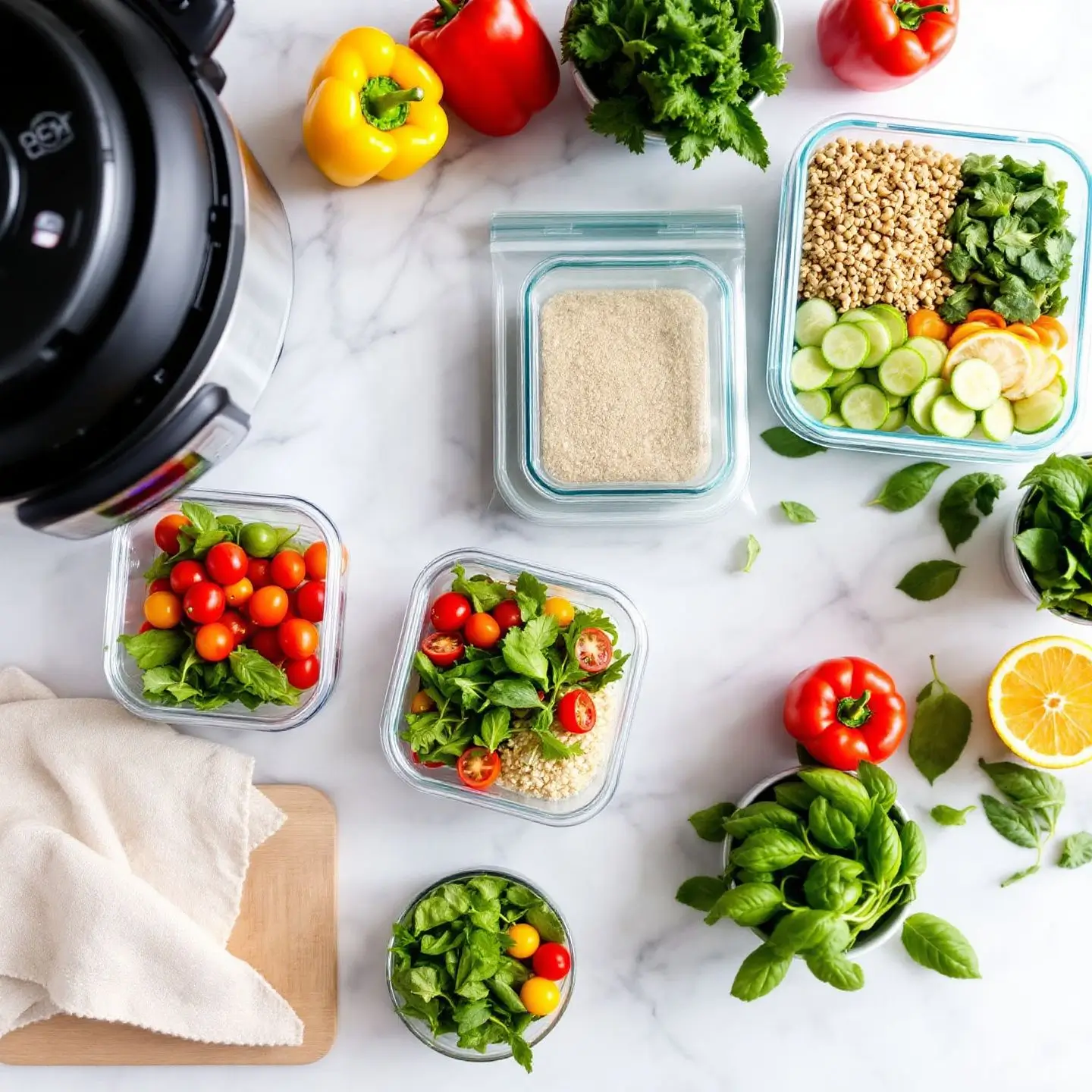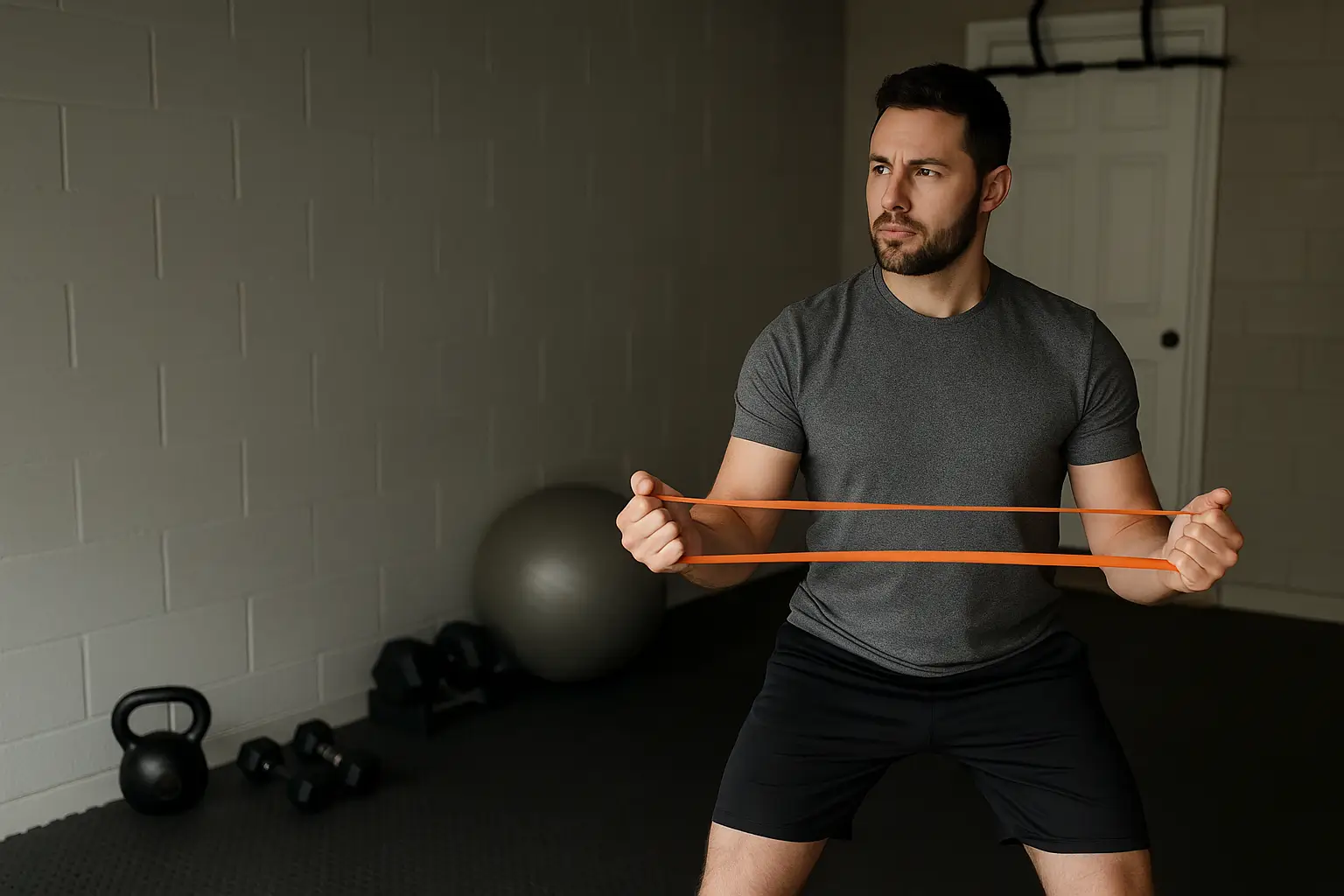5-Ingredient Meal Prep Mastery: Essential Tools That Make Healthy Eating Effortless
If you’re a busy professional or parent juggling endless responsibilities, you know the struggle all too well. It’s 6 PM, you’re exhausted from a long day, and the last thing you want to do is figure out what’s for dinner. Sound familiar? You’re definitely not alone.
The statistics are staggering: the average American spends only 37 minutes per day on food preparation, yet we spend nearly $3,500 annually on dining out and takeaway meals. Meanwhile, studies show that families who meal prep regularly save an average of $1,200 per year while consuming 40% more fruits and vegetables than those who don’t plan ahead.
The good news is that with the right tools and a simple 5-ingredient approach, you can transform your relationship with healthy eating. No more grabbing fast food on the way home or staring blankly into your fridge wondering what to make. Instead, you’ll have nutritious, delicious meals ready to go whenever hunger strikes.
This isn’t about becoming a gourmet chef or spending your entire weekend in the kitchen. It’s about creating a sustainable system that works with your demanding schedule, not against it. The secret lies in choosing the right equipment and following a proven strategy that eliminates guesswork and reduces prep time by up to 70%.
Why Traditional Meal Planning Falls Short
Let’s be honest – most meal prep advice assumes you have unlimited time and energy. Between work deadlines, school pickups, and everything else on your plate, who has time for elaborate recipes with 15 ingredients and complex techniques?
The reality is that time constraints and decision fatigue often lead to unhealthy food choices. When you’re tired and pressed for time, it’s easier to order takeout or heat up processed convenience foods than to cook from scratch.
Research from Cornell University reveals that we make over 200 food-related decisions every single day. By evening, our decision-making capacity is depleted, making us 35% more likely to choose convenience over nutrition. Traditional meal planning adds to this burden by requiring constant choices about recipes, ingredients, and cooking methods.
Furthermore, most meal prep guides focus on elaborate Sunday cooking marathons that leave you exhausted before the week even begins. They assume you have professional-grade kitchen equipment, hours of free time, and the energy to prep 21 different meals. No wonder 73% of people who attempt traditional meal prep abandon it within the first month.
The 5-Ingredient Solution
Here’s where the magic happens: by limiting yourself to just five ingredients per meal, you eliminate decision paralysis while still creating satisfying, nutritious dishes. Think grilled chicken with roasted vegetables and quinoa, or a hearty lentil soup with just a handful of simple ingredients.
The science behind this approach is compelling. Psychologist Barry Schwartz’s research on choice overload demonstrates that having too many options actually decreases satisfaction and increases anxiety. By constraining your ingredient list, you paradoxically increase your creativity and satisfaction with the results.
Consider these winning 5-ingredient combinations:
Mediterranean Bowl: Chicken breast, cherry tomatoes, cucumber, feta cheese, olive oil
Asian-Inspired Stir-Fry: Ground turkey, broccoli, bell peppers, soy sauce, brown rice
Comfort Food Classic: Sweet potato, black beans, corn, lime, cilantro
Protein-Packed Salad: Salmon, mixed greens, avocado, lemon, hemp seeds
Each combination provides complete nutrition while keeping prep time under 20 minutes. The key is choosing ingredients that complement each other naturally, eliminating the need for complex seasonings or sauces.
Essential Tools for Meal Prep Success
The right equipment can make or break your meal prep routine. Here are the game-changing tools that will streamline your process:
Invest in quality glass containers with secure, leak-proof lids. Unlike plastic, glass won’t absorb odors or stains, and you can go straight from fridge to microwave without worry. Look for containers with compartments to keep different foods separate, and make sure they’re stackable to maximize fridge space.
Pro Tips: Choose containers with at least 2-3 compartments to prevent food mixing. Borosilicate glass withstands temperature changes better than regular glass. Invest in various sizes – small ones for snacks and sides, larger ones for complete meals. The initial investment pays for itself quickly as these containers last for years, unlike plastic alternatives that need frequent replacement.
What to Look For: Airtight seals, microwave-safe lids, stackable design, and dishwasher-safe materials. Brands like Pyrex, Anchor Hocking, and Rubbermaid Brilliance offer excellent options in this price range.
This multitasking marvel will become your best friend. Cook grains, proteins, and vegetables all in one pot, often in under 30 minutes. From perfectly tender chicken breasts to creamy risotto without the stirring, an Instant Pot turns complex cooking into a set-it-and-forget-it process.
Time-Saving Examples: Cook dried beans in 25 minutes (vs. 8 hours soaking + 2 hours cooking), prepare brown rice in 12 minutes (vs. 45 minutes stovetop), and make fall-off-the-bone chicken in 15 minutes. The pressure cooking method also retains more nutrients compared to traditional boiling.
Beyond Basic Cooking: Use the sauté function to brown meats, the yogurt setting to make homemade yogurt, and the slow cooker mode when you want that traditional slow-cooked flavor. Many models include rice cooker, steamer, and even air fryer functions, essentially replacing multiple appliances.
Portion control becomes effortless when you can quickly weigh ingredients and finished meals. A food scale takes the guesswork out of serving sizes and helps ensure you’re getting balanced nutrition in every container.
Accuracy Matters: Studies show that people typically underestimate portion sizes by 20-40%. A digital scale eliminates this guesswork, helping you maintain consistent calorie and macro targets. This is especially crucial for weight management goals or specific dietary requirements.
Meal Prep Efficiency: Weigh ingredients directly into your cooking pot or prep containers to minimize dishes. Use the tare function to zero out container weight and measure multiple ingredients in the same bowl. This streamlines your prep workflow significantly.
Extend the life of your prepped ingredients and batch-cooked meals significantly. Vacuum sealing prevents freezer burn and keeps food fresh up to five times longer than traditional storage methods. It’s perfect for preparing proteins in bulk or preserving seasonal vegetables.
Cost Savings: Buy proteins in bulk when they’re on sale, portion them out, and vacuum seal for long-term storage. This strategy can reduce your protein costs by 30-50%. Seasonal vegetables can be prepped and stored at peak freshness, saving money and ensuring year-round variety.
Advanced Techniques: Use vacuum sealing for sous vide cooking to achieve restaurant-quality results. Vacuum-sealed marinades penetrate meat faster and more thoroughly. You can even portion out smoothie ingredients and vacuum seal them for grab-and-go breakfast options.
Your Step-by-Step Meal Prep Strategy
Start by choosing 2-3 simple recipes, each with no more than 5 ingredients. Spend 30 minutes planning and grocery shopping, then dedicate 1.5-2 hours to batch cooking. Use your Instant Pot for grains and proteins while roasting vegetables in the oven.
Planning Phase (20 minutes): Review your weekly schedule to identify which meals you’ll need prepared. Check your pantry for existing ingredients to minimize waste. Create a simple shopping list organized by store sections to make grocery runs more efficient.
Prep Phase (90 minutes): Start your Instant Pot with grains or legumes, then prep vegetables for roasting. While those cook, portion proteins and prepare any raw components. This parallel processing approach maximizes efficiency.
Wednesday evening, do a quick inventory of your prepped meals and prep any fresh ingredients needed for the rest of the week. This prevents the weekend’s work from going to waste.
Fresh Element Strategy: Add fresh herbs, cut vegetables, or prepare quick sauces to keep meals interesting. This small effort prevents meal prep fatigue and maintains nutritional quality throughout the week.
Use your glass containers for ready-to-eat meals and vacuum sealer for longer-term storage. Label everything with contents and dates – your future self will thank you.
Organization System: Use a first-in, first-out rotation system. Store proteins on bottom shelves (coldest area), vegetables in crisper drawers, and prepared meals at eye level for easy access. Color-coded labels help family members quickly identify their preferred options.
Advanced Meal Prep Techniques
Instead of preparing complete meals, cook individual components that can be mixed and matched throughout the week. This approach provides variety while maintaining efficiency.
Protein Options: Baked chicken thighs, hard-boiled eggs, seasoned ground turkey, baked tofu, or grilled salmon portions.
Carbohydrate Base: Brown rice, quinoa, sweet potato cubes, or cauliflower rice for lower-carb options.
Vegetable Medley: Roasted Brussels sprouts, steamed broccoli, sautéed bell peppers, or fresh cucumber slices.
Prepare larger batches monthly and freeze portions for ultimate convenience. Freezer meal prep works especially well for soups, stews, and casseroles.
Freezing Guidelines: Cool completely before freezing, leave expansion room in containers, and use within 3 months for best quality. Vacuum-sealed portions can last up to 6 months while maintaining flavor and texture.
Making It Sustainable
The key to long-term success isn’t perfection – it’s consistency. Start with prepping just 3-4 meals per week rather than trying to prep every single meal. As the routine becomes second nature, you can gradually increase your prep volume.
Remember, even having half your meals prepped is a huge win. You’ll save money, eat healthier, and reclaim precious time during busy weeknights.
Common Mistakes to Avoid
Overcomplicating Recipes: Stick to your 5-ingredient rule, especially when starting. Complex recipes lead to longer prep times and higher chances of abandoning the system.
Prepping Too Much at Once: Start small and build momentum. Attempting to prep 21 meals in your first session is a recipe for burnout.
Ignoring Food Safety: Cool foods completely before refrigerating, store proteins separately from vegetables, and follow the 4-day rule for refrigerated prepared meals.
Forgetting Variety: Rotate your 5-ingredient combinations weekly to prevent boredom. Keep a list of successful combinations for easy reference.
Budget-Friendly Meal Prep Tips
Smart shopping strategies can reduce your grocery bill by 30-40% while maintaining nutrition quality:
Seasonal Shopping: Build your meal prep around seasonal produce when it’s most affordable and flavorful. Winter squashes, summer tomatoes, and spring greens each offer unique nutritional benefits at peak value.
Bulk Buying: Purchase grains, legumes, and frozen vegetables in larger quantities. Your vacuum sealer becomes invaluable for portioning bulk purchases into meal-sized amounts.
Protein Rotation: Alternate between more expensive proteins (salmon, grass-fed beef) and budget-friendly options (chicken thighs, eggs, beans) to maintain variety without breaking the bank.
Store Brand Strategy: Generic brands often offer 20-30% savings on staples like olive oil, canned tomatoes, and frozen vegetables without compromising quality.
The Bottom Line
With these essential tools and a 5-ingredient approach, meal prep transforms from a chore into an efficient system that works with your busy lifestyle, not against it. The initial investment in quality tools pays for itself quickly through reduced food waste and fewer takeout orders.
The math is compelling: investing $200-300 in quality meal prep tools typically saves families $1,200-2,000 annually while improving nutrition and reducing stress. More importantly, you’ll reclaim 5-7 hours per week that would otherwise be spent on daily meal decisions and preparation.
Ready to take control of your weeknight dinners? Start with one tool and one simple recipe. Your future self – and your family – will thank you for making healthy eating effortless rather than overwhelming.
Remember, the goal isn’t perfection – it’s progress. Even implementing one or two of these strategies will create noticeable improvements in your daily routine. As you build confidence and see results, you can gradually expand your meal prep mastery.












